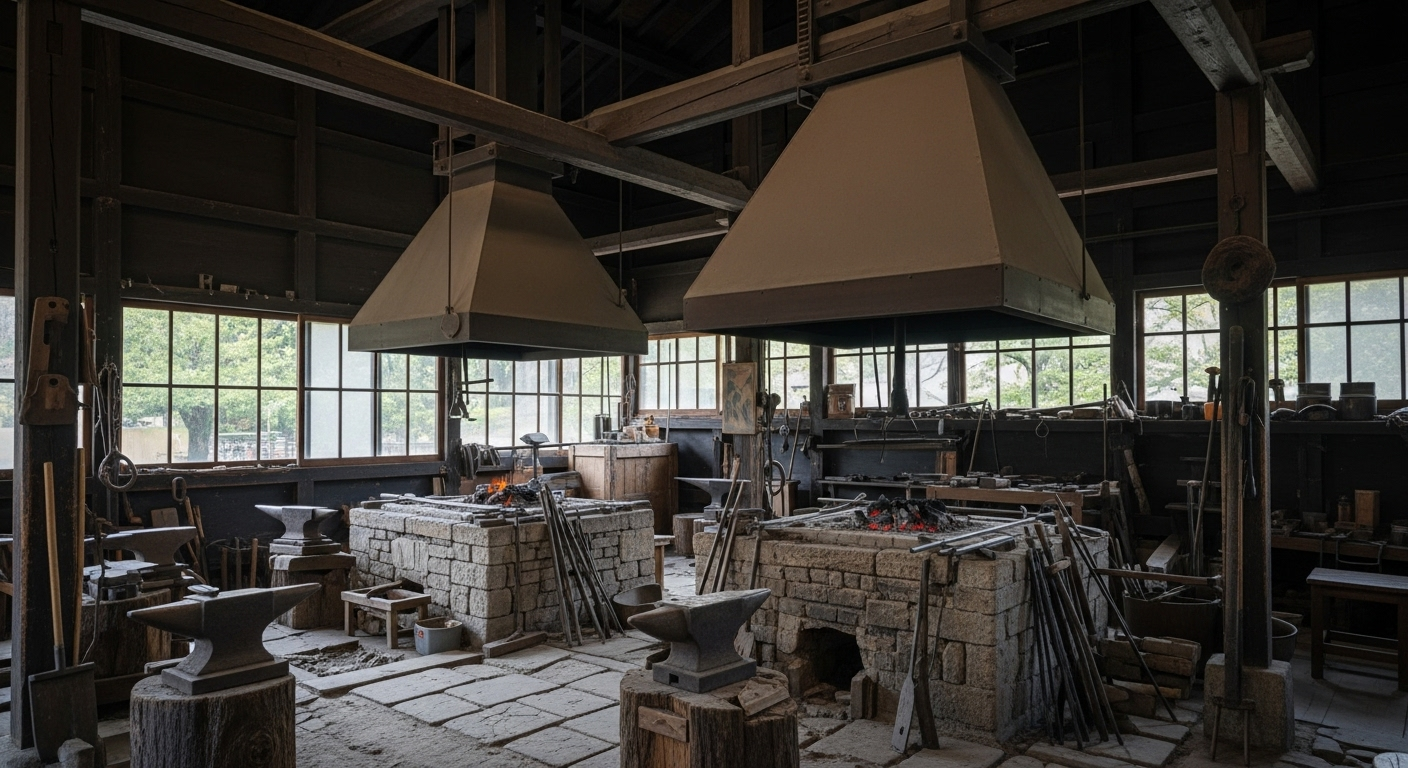
-
The Current State of Honyaki Knives
-
JUNE 23, 2024
-
Growing Interest in Honyaki Knives
Introduction
Honyaki knives are meticulously crafted one by one by skilled blacksmiths, making them highly expensive. In recent years, the global spread of culinary culture and increasing interest in cooking have led to a rising demand for high-quality kitchen tools. Among enthusiasts learning authentic Japanese cuisine and precise cooking techniques, Honyaki knives have gained significant attention. -
Declining Supply and Challenges in Skill Inheritance
On the other hand, the supply of Honyaki knives has been on a decline year by year. Traditional blacksmithing skills typically require years of training and experience. However, in modern times, fewer people are taking up these traditional professions, leading to a shortage of individuals who can inherit these skills.
-

-
-
Industrialization and the Value of Honyaki Knives
In an era of industrialization and mass production, handmade products take more time and cost compared to those made by machines. Honyaki knives, forged with traditional steel, involve a very delicate manufacturing process. In fact, knives made through the water-quenching method boast a sharp edge but are prone to cracking when high-temperature steel is rapidly cooled with water.
-

-
-
The Cultural Value of Traditional Crafts
However, traditional crafts like Honyaki knives possess value far beyond merely being "things" created. They embody the culture, history, and the passion and knowledge of craftsmen spanning generations.
-

-
-
Conclusion: Why Honyaki Still Matters
Honyaki knives are more than rare tools of the kitchen — they are living testaments to centuries of skill, patience, and artistry. In a world rushing toward convenience and mass production, these blades remind us of the value of slowness, of devotion, and of the human touch that no machine can replicate.
To hold a Honyaki knife is to hold a piece of history and culture — a bridge between past and present, forged in fire and refined by generations of hands.
That is why, despite their scarcity, Honyaki knives will always remain objects of reverence, not just for their performance, but for the soul they carry within their steel.
The Disappearing Blade: The Enduring Soul of the Honyaki Knife
-

Honyaki blades are fading from the world, yet their rarity reveals a deeper truth:
they endure as irreplaceable expressions of human skill and cultural spirit, impossible for machines to replicate. -
Honyaki
-
-
The Price of Perfection: Why Honyaki Knives Are So Expensive
Honyaki knives are forged from a single piece of steel, demanding unrivaled skill, pure materials, and mastery of fire and water. With few craftsmen able to create them, their rarity—and the risk behind each blade—explains why these masterpieces command such a high price.
-

Honyaki
Honyaki knives are the pinnacle of traditional Japanese craftsmanship, forged from a single piece of steel using the demanding tsuchioki clay-tempering method. Requiring extraordinary skill, they embody purity and precision—blades of breathtaking sharpness and beauty, treasured by chefs who seek nothing less than perfection.

Sakai’s Dwindling Masters: A Legacy at Risk
Once the heart of Japan’s finest cutlery, Sakai now has only a handful of blacksmiths left. With rising competition and fading interest among the young, new markets and fresh apprentices are vital to survival. Supporting these craftsmen means safeguarding a 600-year cultural legacy.

The Soul of Craftsmanship
-
Happiness Is Not Something You Become, But Something You Realize — Lessons from a Japanese Knife Craftsman
“Happiness is not something you become, but something you realize.” In many ways, this truth mirrors the sharpening of a traditional Japanese knife. Over the years, I have learned that creating a fine blade demands patience, focus, and attention to every detail. At first, the progress is invisible, but stroke by stroke, the steel transforms—until the blade reveals a quiet brilliance.
-
Happiness is much the same. In chasing grand achievements, we often overlook the small joys of everyday life. Yet in a still moment, we suddenly notice: “This is happiness.” Whether it comes through relationships, or in the deep focus of our craft, true happiness is often hidden in the simplest, most unassuming moments.
Just as a finely sharpened knife delivers the perfect cut, a heart refined by awareness and gratitude brings forth fulfillment. This, I believe, is the true form of happiness.

Experience the sharpness trusted by 98% of Japan’s top chefs — handcrafted in Sakai City.
Through our exclusive partnership with Shiroyama Knife Workshop, we deliver exceptional Sakai knives worldwide. Each knife comes with free Honbazuke sharpening and a hand-crafted magnolia saya, with optional after-sales services for lasting confidence.
KIREAJI's Three Promises to You
-

1. Forged in the Legacy of Sakai
From Sakai City—Japan’s renowned birthplace of professional kitchen knives—each blade is crafted by master artisans with over six centuries of tradition. Perfectly balanced, enduringly sharp, and exquisitely finished, every cut carries the soul of true craftsmanship.
-

2. Thoughtful Care for Everyday Use
Every knife includes a hand-fitted magnolia saya for safe storage. Upon request, we offer a complimentary Honbazuke final hand sharpening—giving you a precise, ready-to-use edge from day one.
-

3. A Partnership for a Lifetime
A KIREAJI knife is more than a tool—it is a lifelong companion. With our bespoke paid aftercare services, we preserve its edge and beauty, ensuring it remains as precise and dependable as the day it first met your hand.








